
by Victoria Silverwolf
From the Castle of Otranto to Northanger Abbey
Most literary historians state that the first Gothic novel was The Castle of Otranto (1764) by Horace Walpole. It set the pattern for later spooky stories. You know the type; mysteries, curses, hidden passages, innocent heroines prone to fainting, etc.
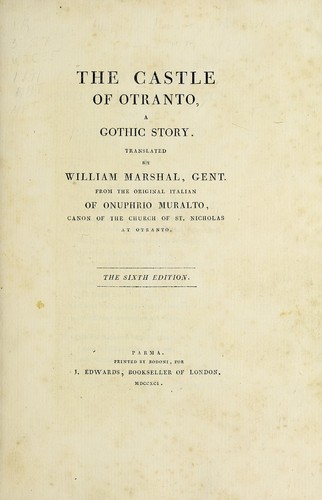
All that stuff about being translated from Italian by the nonexistent William Marshal is fictional. Note that the book was very popular, going through multiple editions.
Walpole's bestseller inspired many imitations. The genre was so popular that it was parodied in Jane Austen's posthumously published novel Northanger Abbey (1817), in which a naïve young woman who reads too much Gothic fiction imagines all sorts of dark secrets behind perfectly innocent situations.

It first appeared with Persuasion, another posthumous novel.
Frankenstein Meets Dracula
One of the most famous works of Gothic fiction appeared soon after, with the publication of Mary Shelley's 1818 novel Frankenstein; or, The Modern Prometheus. This groundbreaking work, which one might think of as the first real science fiction novel, spawned countless adaptations and imitations, in the form of movies, comic books, and so forth.
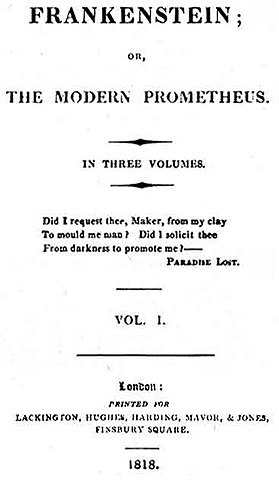
It seems odd that authors didn't want their names on their books back in the old days.
I'm sure you're familiar with the scary stories that appeared during the Victorian era, from Edgar Allan Poe's chilling tales of madness and murder, to Bram Stoker's seminal vampire novel Dracula (1897).

The cover of the first edition. Looks very modern, doesn't it?
Let me back up a little bit and mention the Brontë sisters, particularly Emily Brontë's novel Wuthering Heights and Charlotte Brontë's novel Jane Eyre, both published in 1847. Both books added a touch of romance to Gothic fiction, particularly the latter.
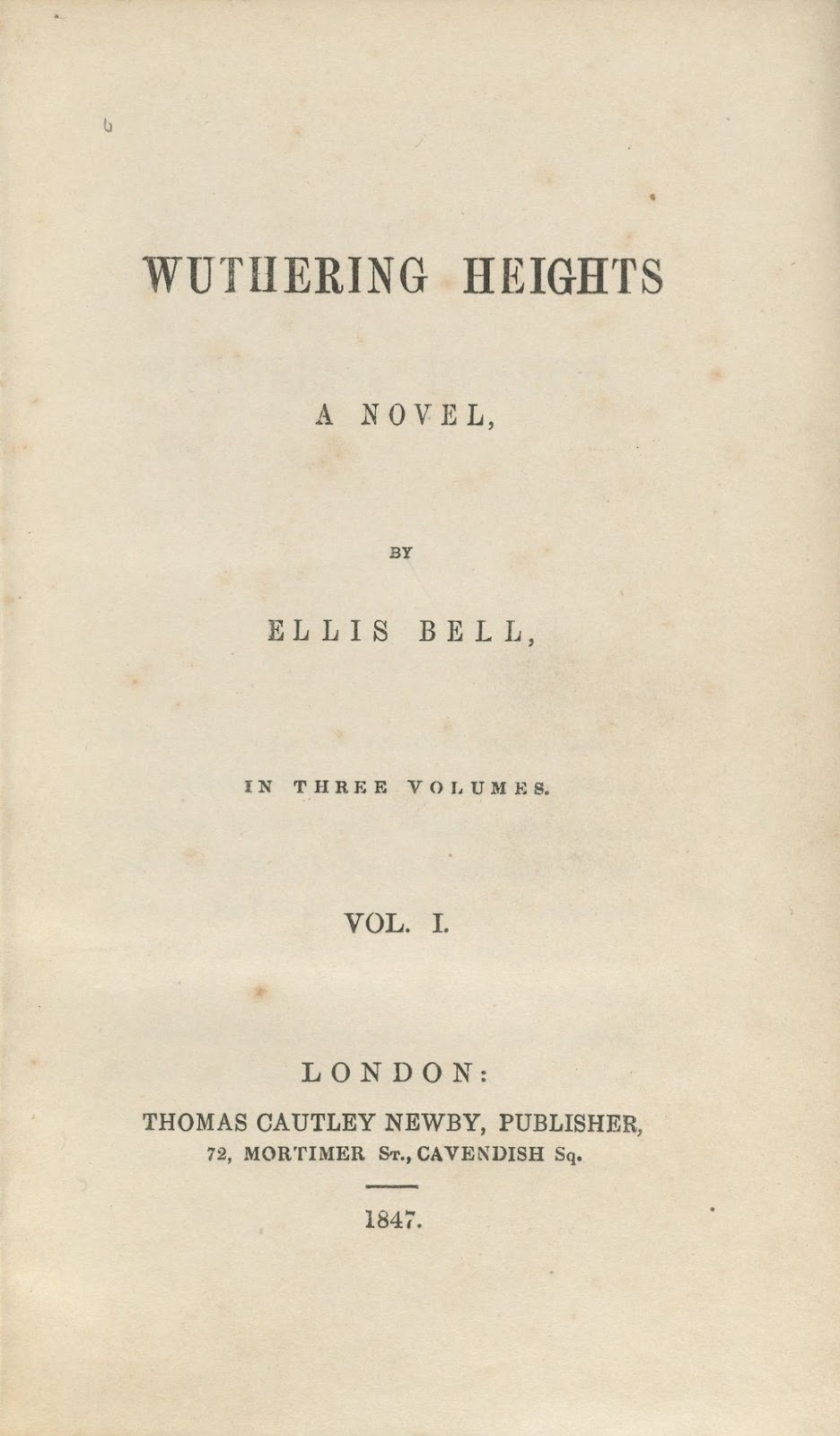
At least she used a pseudonym instead of being completely anonymous.
I hesitate to call Wuthering Heights a love story, although you might think it one if you've only seen the movie. The relationship between Catherine and Heathcliff in the book is more complex than simply a romance. (It's a very strange novel in many ways.)
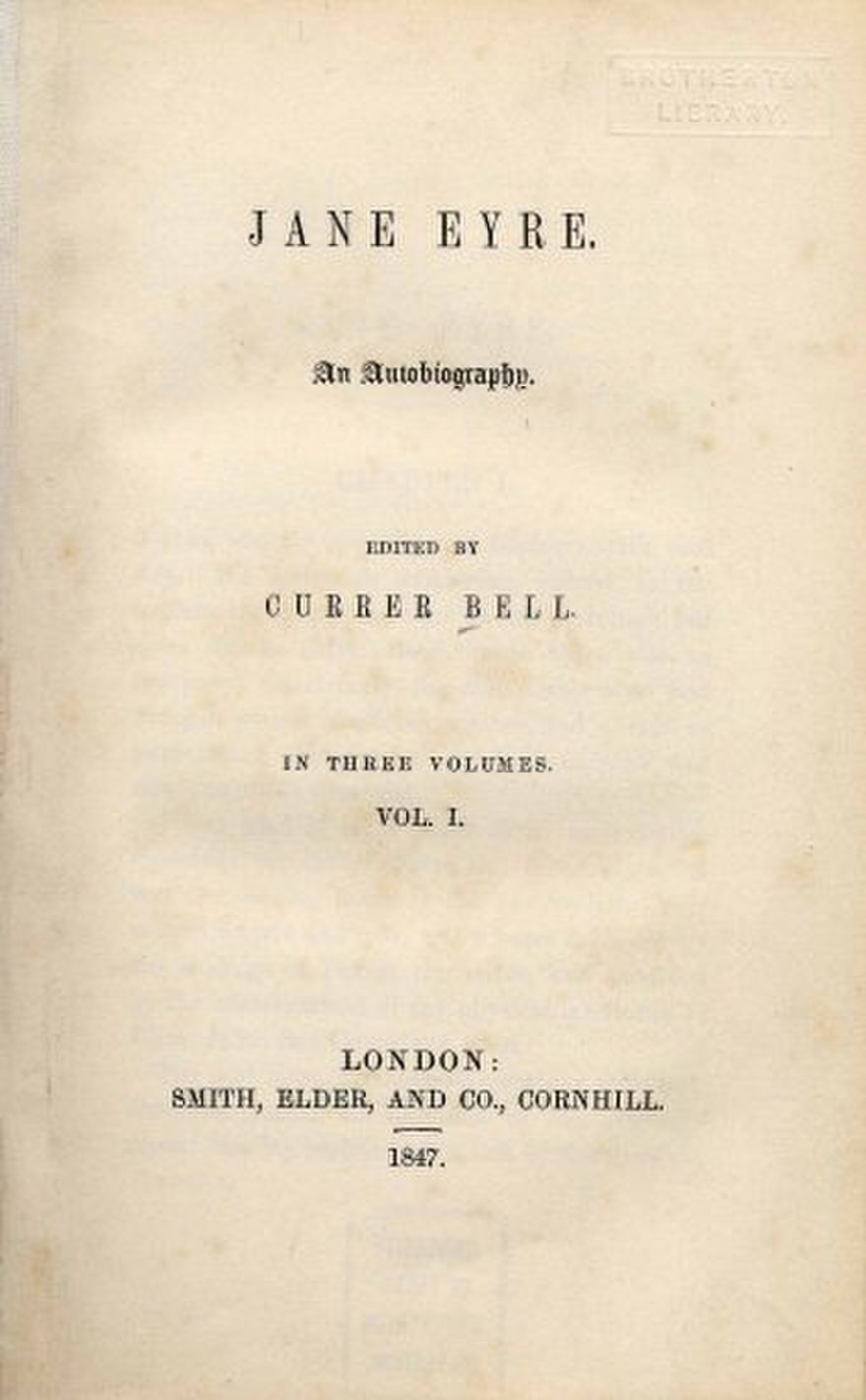
Note that the book pretends to be a true account, and the similarity in pseudonyms. Their sister Anne Brontë used the pseudonym Acton Bell for her novels, which lie outside the topic of this article.
Jane Eyre is more obviously a romance, although it certainly contains elements of Gothic fiction as well. This blending of love and terror had an important influence on romantic novels of the current century, eventually leading to the marketing category of Gothic Romances.
(Just to make things completely clear, allow me to emphasize the fact that I am using the term Romances — note the capital letter — to refer to books sold as love stories. It should not be confused with the rather old-fashioned use of the word romance — note the small letter — to mean an imaginative tale, as in the archaic term scientific romance for what we now call science fiction.)
The most important modern Gothic Romance, I think, is Daphne du Maurier's 1938 bestseller Rebecca. The success of this novel, and the award-winning 1940 Alfred Hitchcock film adaptation, led to many similar books, which you can still find on the paperback racks of your local drug store.
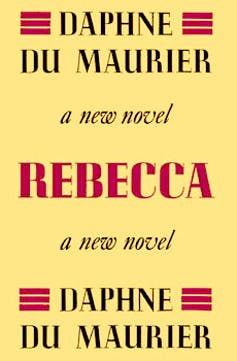
The similarity to the cover of Dracula is interesting.
There are lots of these things floating around, usually with a cover depicting a beautiful young woman and a sinister building in the background. Often there's a single light in the window.
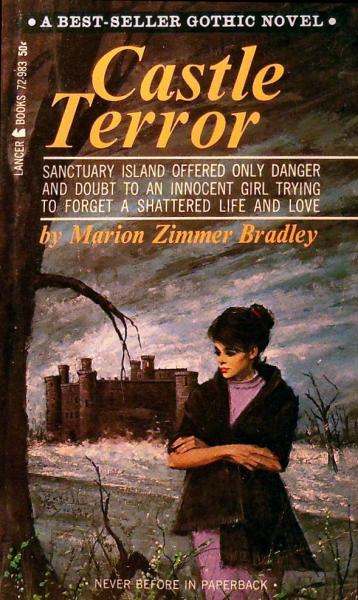
Science fiction writers sometimes produce Gothic Romances as well.
Welcome to Collinsport
I offer you this rather haphazard look at a particular category of popular fiction because the subject came to mind when a new daytime drama (that's a euphemism for soap opera) premiered on American television one week ago. Dark Shadows — even the title suggests Gothic elements — offers the kind of shuddery thrills found in the books I've been discussing. Heck, even the music played during the opening title sequence is spooky!
The first few minutes of the initial episode introduce us to the protagonist and her employers. In the tradition of Jane Eyre, our innocent heroine, Victoria Winters, is an orphan hired to work as a governess.

Victoria Winters, played by newcomer Alexandra Moltke, ponders her past and future.
She travels by train from a foundling home in New York to the fictional village of Collinsport, Maine, where she is to watch over David Collins, the ten-year-old son of Roger Collins.

Young actor David Henesy as the troubled boy David Collins. It must make it easier to have the same first name as your character.
Roger is separated from his wife, David's mother, and is living on the huge estate, including a spooky mansion, known as Collinwood with his fabulously wealthy sister, Elizabeth Collins Stoddard. Elizabeth's husband disappeared eighteen years ago, and she hasn't left Collinwood since.

Louis Edmonds as Roger Collins and movie star Joan Bennett as Elizabeth Collins Stoddard. You may have seen her share top billing with Edward G. Robinson in The Woman in the Window (1944) and Scarlet Street (1945), or with Gregory Peck in The Macomber Affair (1947).
Arriving on the same train as Victoria is Burke Devlin. Like many male characters in Gothic Romances, he's darkly attractive, but obviously has some kind of secret in his past. Adding to the intrigue is the fact that Roger is upset when he learns Burke is back in Collinsport.
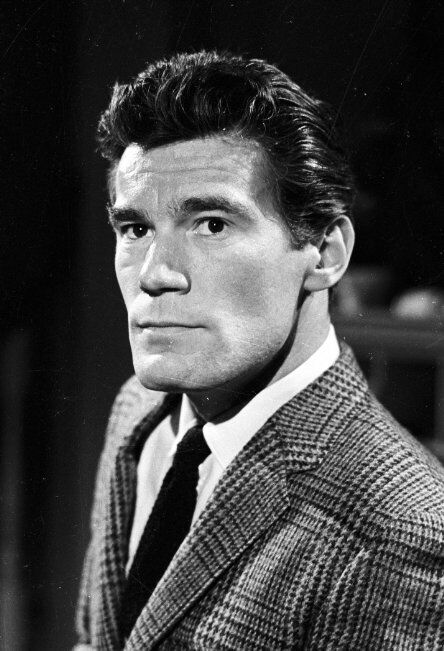
Mitchell Ryan as Burke Devlin, ruggedly handsome antihero.
Mention should be made of Carolyn Stoddard, Elizabeth's daughter, and her boyfriend, Joe Haskell. Joe wants to marry her, but Carolyn is reluctant. She also seems to be interested in Burke.
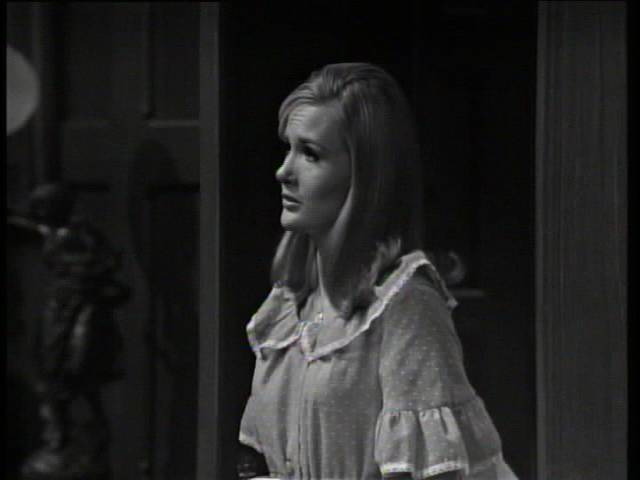
Nancy Barrett as Carolyn Stoddard. Women in nightgowns are a staple of Gothic Romances.
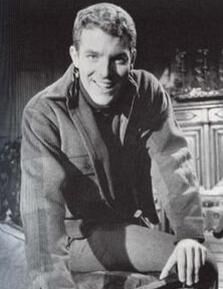
Joel Crothers as Joe Haskell, in a happy mood.
Rounding out the list of major characters are Sam Evans, an artist who appears to know something about the trouble between Roger and Burke, and his daughter Maggie, waitress at the local diner.
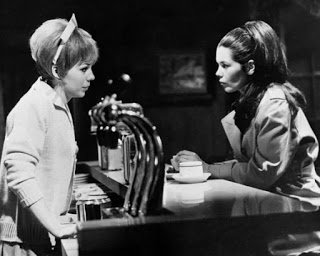
Kathryn Leigh Scott, in an obvious blonde wig, greets Victoria at the diner, and provides exposition for the audience.
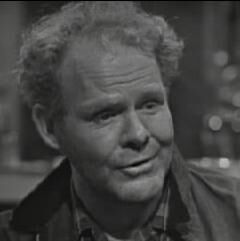
Mark Allen as Sam Evans, who drinks a lot at the Blue Whale, which seems to be the only place to get booze in Collinsport.
After only six episodes, counting today's, we've already got a lot of mysteries. Who were Victoria's parents? Why does Elizabeth want her to work at Collinwood? Where has Burke been for several years? Why did he return to Collinsport? Why is Roger unhappy to know he's around? What does Sam know about the situation? What happened to Elizabeth's husband? Why hasn't she left the estate since he vanished? What's in the locked room in the basement?
Besides all this stuff, we've got subtle hints of the supernatural. Victoria hears unexplained sobbing sounds in the middle of the night. David claims that ghosts told him to send Victoria away. Sam tells her that Collinwood is haunted by Josette, a French woman who leapt to her death from a cliff called Widow's Hill nearly two centuries ago. Whether the ghosts will turn out to be real or not remains to be seen.
It's also unknown whether this offbeat soap opera will stick around for any length of time. It's a production of ABC (American Broadcasting Company), which is something of an upstart network, much newer than CBS (Columbia Broadcasting System) and NBC (National Broadcasting Company.) In my neck of the woods, Dark Shadows shows up at four o'clock in the afternoon, and faces competition from well-established programs on the other networks.

This CBS soap opera has been on the air since 1954.
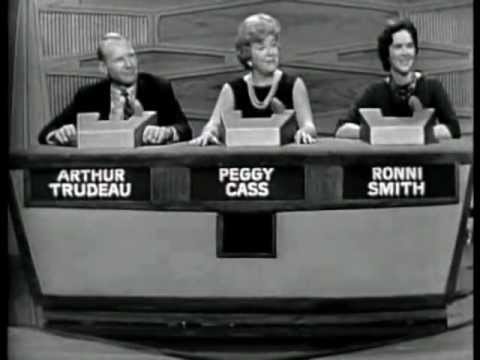
On NBC, we have The Match Game, which has been running since 1962, and is now being broadcast in color.
If none of this appeals to you, you could always read a book.
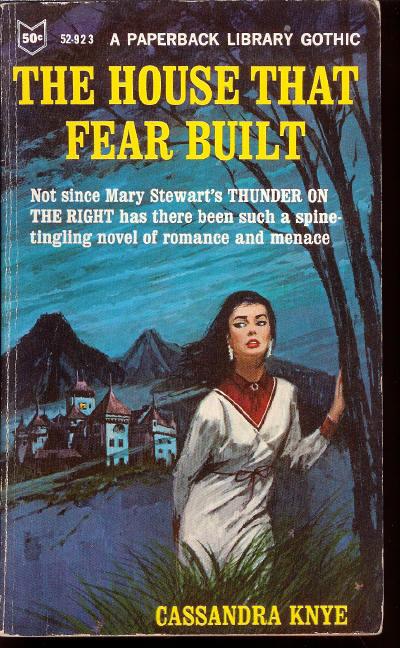
Let's see; beautiful woman with a spooky house in the background, one light in the window; must be a Gothic Romance. And guess what? My sources in the publishing world tell me that Cassandra Knye is actually the team of New Wave SF writers Thomas M. Disch and John Sladek cashing in on the trend.
If you don't feel like watching TV or reading, tune in to KGJ, our radio station! Nothing but the hits!



